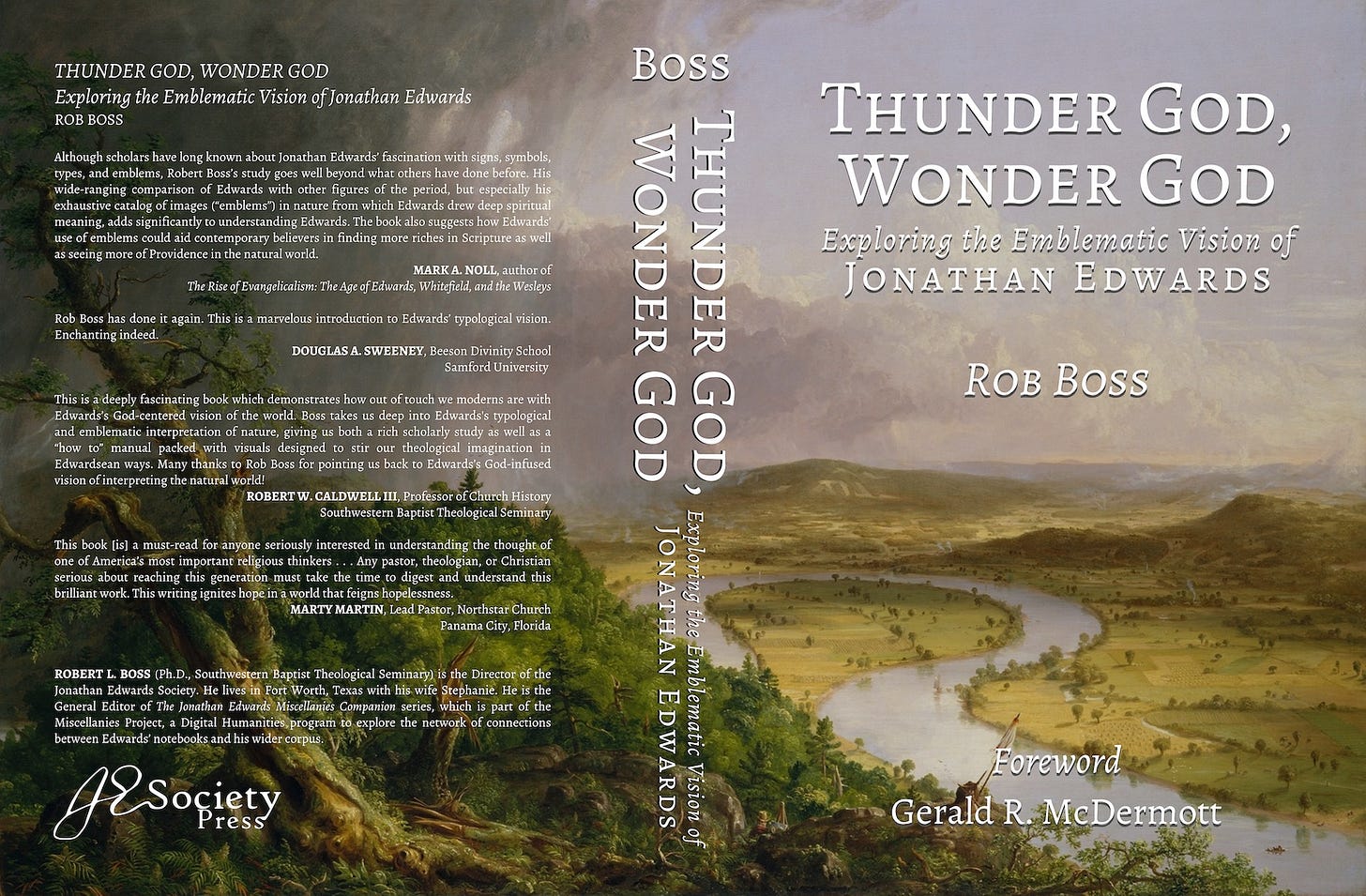Everyday life contains a plethora of mundane and trivial aspects, yet even these can offer valuable lessons to the mindful individual. Early Moderns, like Edwards, through the lens of the “Book of Nature” or the “Great Chain of Being”—which extends from the Throne of God to the smallest pebble on the face of the earth— were able to form intricate harmonies between the physical and invisible worlds of moral, spiritual, political, and psychological entities.
With the advent of modern computing power, the emblematic/typological world view of the Early Modern period can be explored in a new and exciting way—weaving together the Book of Scripture with the Book of Nature in order to reinforce the truths of the Bible. According to Edwards, the exploration of this “limitless frontier” is a task that all should embrace. (See Thunder God, Wonder God, ix-xii.)
If we look on these shadows of divine things as the voice of God, purposely, by them, teaching us these and those spiritual and divine things, to show of what excellent advantage it will be, how agreeably and clearly it will tend to convey instruction to our minds, and to impress things on the mind, and to affect the mind. By that we may as it were hear God speaking to us. Wherever we are and whatever we are about, we may see divine things excellently represented and held forth, and it will abundantly tend to confirm the Scriptures, for there is an excellent agreement between these things and the Holy Scriptures. (Jonathan Edwards, “Images,” no. 70.)
Watch the video above for a brief overview of Types Explorer.
The work on emblemata and the new Types Explorer are particularly promising avenues of inquiry made possible by new technologies applied to Edwards’ writings.
— Kenneth P. Minkema, Editor, Works of Jonathan Edwards
Although scholars have long known about Jonathan Edwards’ fascination with signs, symbols, types, and emblems, Robert Boss’s study goes well beyond what others have done before. His wide-ranging comparison of Edwards with other figures of the period, but especially his exhaustive catalog of images (“emblems”) in nature from which Edwards drew deep spiritual meaning, adds significantly to understanding Edwards. The book also suggests how Edwards’ use of emblems could aid contemporary believers in finding more riches in Scripture as well as seeing more of Providence in the natural world.
— MARK A. NOLL, author of The Rise of Evangelicalism: The Age of Edwards, Whitefield, and the Wesleys



